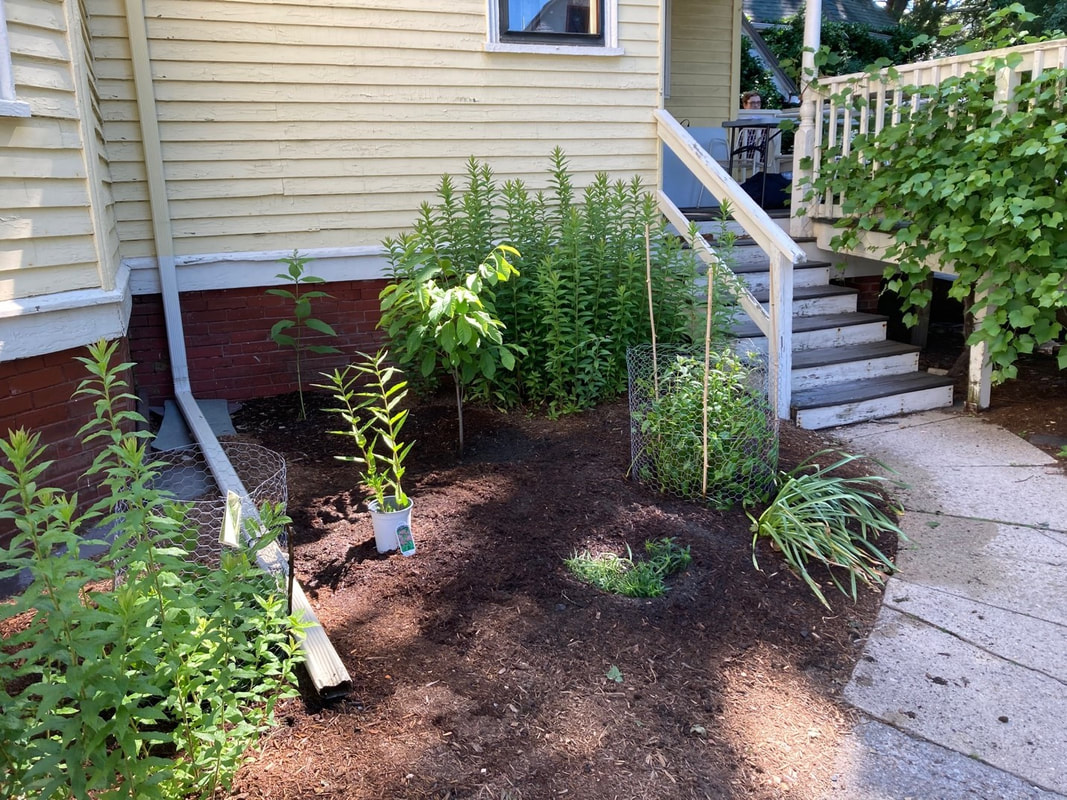To help with fruiting, we’ve invited some pollinators to join us by planting a butterfly and pollinator garden in the sunny area by the steps to the back porch. If our rabbit-foiling devices work, we hope to attract butterflies, moths, bees of all sorts, and other pollinators, including perhaps some hummingbirds, with our all-star line up of native beauties:
- In center and right fields and gracing the third-base dugout, two large stands of wrinkle-leaf goldenrod (Solidago rugosa) have been pinch hitting for us for a few years.
- Sweet Joe Pye weed (Eutrochium purpureum, formerly Eupatorium purpureum), a true butterfly magnet, has taken up its position in left field.
- A large clump of bee balm (Monarda didyma ‘Jacob Cline’) stands in front of the goldenrod, ably covering first base.
- At shortstop, a swamp milkweed (Asclepias incarnata ‘Cinderella’) will, with care and luck, grow into a fair-sized clump in a few years and provide a home for Monarch larvae.
- On the pitcher’s mound, a low-growing clump of butterfly weed (Asclepias tuberosa) should light up the area during the summer with bright orange blooms that no pollinator can resist.
- Rounding out the team on third base is a Virginia sweetspire (Itea virginica ‘Scentlandia’), a bush whose luscious-smelling flowers have already done their pollinator-attracting job for the year.
- Out back in the bleachers, some of our shady native friends are cheering on the team: a large stand of goat’s beard (Aruncus dioicus), two large oakleaf hydrangeas (Hydrangea quercifolia), and a columbine (Aquilegia canadensis) reliably attract bees, butterflies, and moths.
“But wait,” you may say, “I see who’s on first, etc., but who’s on second?” You mean what’s on second? Why the pawpaw, of course! So, grab you butterfly book and come to the Havurah to cheer on the team and enjoy the blooms of summer.

 RSS Feed
RSS Feed